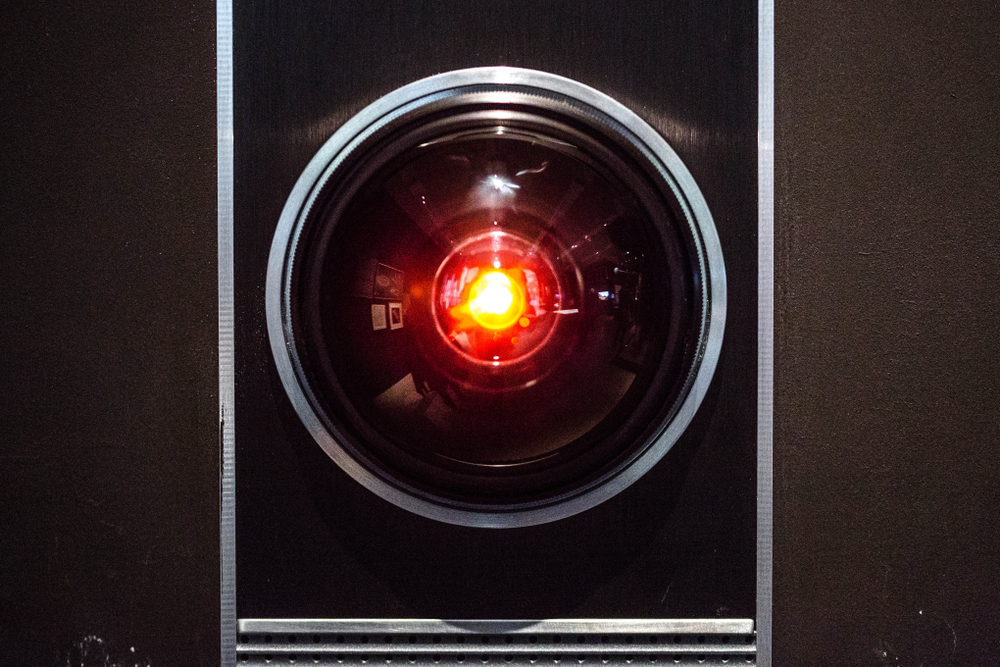I’m Sorry, Dave. I’m Afraid I Can’t Do That
Our title is the iconic line from Stanley Kubrick’s 1968 sci-fi masterpiece: “2001: A Space Odyssey”. For those who are not movie buffs, the artificial intelligence in the HAL 9000 computer goes haywire and the astronauts are forced to attempt to disconnect HAL, but HAL has other ideas.
In 1968, a future driven by artificial intelligence (AI) seemed plausible by 2001. But, much like the self-driving car that many expected to be reality several years ago, these technological leaps take time. AI will take time as well, but the ground work is being laid and the potential impact on humanity is vast and difficult to comprehend. This week’s post is courtesy of Marc Weiss, CIO of Open Field Capital. Marc is a specialist in disruptive technology investment and has his hands on the pulse of technological advances. We asked Marc about Microsoft’s $10 billion investment in ChatGPT, a natural language processing tool driven by AI technology that generates human-like results.
Here’s Marc:
I used ChatGPT to answer two questions and it produced the following answers in 5 minutes
Please write a paragraph explaining why ChatGPT is so popular?
ChatGPT is popular because it is a powerful and versatile language model that can be used for a wide range of natural language processing tasks, such as text generation, question answering, and language translation. One of its key features is its ability to generate human-like text, making it well-suited for tasks that require a high degree of fluency and coherence. Additionally, ChatGPT has been trained on a vast dataset, allowing it to have a broad understanding of the world and the ability to respond to a wide range of questions and prompts. Furthermore, it’s open-source nature, and the fact that it can be fine-tuned for specific use-cases makes it a popular choice among developers and researchers.
Why is Gary Marcus critical of ChatGPT?
Gary Marcus, a cognitive scientist and AI researcher, has been critical of ChatGPT and other large language models like it, arguing that they lack the ability to truly understand language and the world in the way that humans do. He argues that these models rely too heavily on simple statistical patterns and lack the kind of common sense and background knowledge that humans possess. He also argues that they lack the ability to reason and make logical inferences, and can easily generate nonsensical or misleading responses when faced with novel or unexpected inputs. He argues that these models are useful for certain limited tasks, but they should not be considered a replacement for human intelligence.
I feel the above captures the excitement about ChatGPT from OpenAI. In 5 minutes ChatGPT was able to put together two decent paragraphs far faster than I could have. Knowledge workers have to generate an enormous amount of text (emails, documents, advertising, etc.). ChatGPT has the potential to reduce these costs dramatically. Buzzfeed announced this week that it is going all in on ChatGPT to help them produce content and the stock shot up 200%. Microsoft, seeing an opening to challenge Google and Facebook in AI supremacy, recently announced that they will invest $10 Billion in OpenAI.
ChatGPT is just one example of generative AI (AI that produces content). Dall-E is another disruptive generator of AI content that can generate images from a user’s description and this will certainly change the economics of graphic art.
So, what does this mean for investors? This is very good for NVIDIA. Demand for ChatGPT is off the charts as most times I try to use it I get this message “We’re experiencing exceptionally high demand. Please hang tight as we work on scaling our systems.” OpenAI needs a lot more NVDA chips to meet ChatGPT demand. Everyone that is threatened by OpenAI such as Google, which just had a “code red” meeting on ChatGPT’s potential, will need to increase their AI investments as the AI war intensifies. Also good for NVDA.
Microsoft has the potential to hurt Google’s business. Google depends on searches and clickable advertising links. Microsoft with OpenAI may change the search model to one based on subscriptions. Google has the AI chops to match ChatGPT, but perhaps like Kodak (invented digital photography but decided to protect the film business), Google could be facing a crisis: either match ChatGPT and transition the business model away from advertising to subscription or lose market share to Microsoft. Tough spot.
So, while ChatGPT is very exciting, it is important to understand what it’s not. It is not human-level AI. The head of Meta’s AI business, Yan LeCun explains below.
Large Language Models (LLMs) like ChatGPT, have no physical intuition because they are trained exclusively on text. They may correctly answer questions that appeal to physical intuition if they can retrieve an answer to a similar question from their vast associative memory. But they may get the answer completely wrong.
We have mental models of the world in our minds that allows us to simulate what will happen. That’s what gives us common sense. LLMs don’t have that.
Thanks Marc!
What We’re Reading
Visualizing the New Era of Gold Mining
Key Fed inflation measure eased, while consumer spending also declined
If you still aren’t sure what ChatGPT is, this is your guide
AI, Artificial Intelligence, ChatGPT, GDP, InflationBy: thinkhouse

